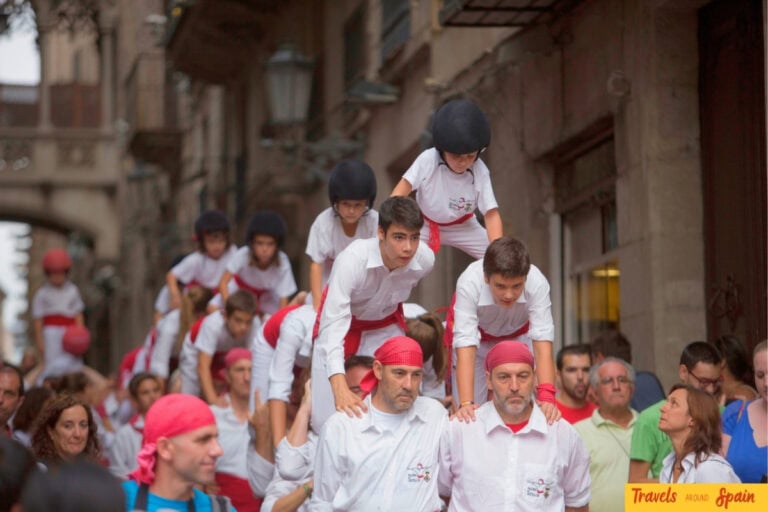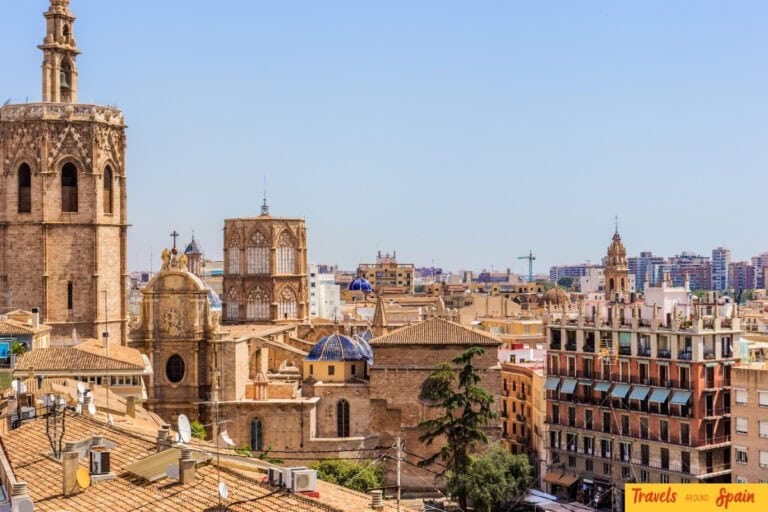Can You Drink the Water in
Gran Canaria? 2025 Safety Guide
Safe to drink but tastes terrible – here’s everything explained
By Liam Mulligan | Published on June 28, 2025 |Modified on July 16, 2025
Working out whether the tap water is safe to drink is one of the first things I search for every time I travel. My recent holiday to Gran Canaria was no different. Whilst my partner was unpacking the suitcase ((you can see what we packed in our June travel guide), I was busy trying to work out if you can drink the tap water in Gran Canaria.
The good news is that you can. Gran Canaria’s tap water is safe to drink and meets EU health standards. The bad news? It tastes pretty unpleasant due to the desalination process. Many visitors to the island prefer bottled water because of this taste issue.
The bottom line is that the tap water is safe for drinking, cooking and brushing your teeth, but you might not want a full glass of it. If you’ve got a sensitive stomach, definitely start with bottled water to avoid ruining your holiday.
Is Gran Canaria Tap Water Actually Safe to Drink?
EU Standards & Testing
Being part of Spain and the European Union, Gran Canaria tap water must meet strict EU drinking water regulations.
Local authorities regularly test the water supply to ensure it remains safe for both residents and the millions of tourists who visit the Canary Islands each year.
According to a 2021 University of Las Palmas study reported by La Provincia newspaper, Gran Canaria’s tap water is completely safe to drink despite its less-than-ideal taste.
The study revealed that tap water actually faces more stringent health regulations than bottled water and is the most closely monitored food product we consume.
Why Do Locals in Las Palmas Still Buy Bottled Water?
Despite Las Palmas water quality now ranking among Spain’s best according to recent studies, many locals continue purchasing bottled water.
This habit stems from historical perceptions dating back to the 1970s-80s when Gran Canaria water quality was genuinely poor and unsafe to drink.
Many residents maintain a “just in case” mentality, preferring bottled water over tap water. Combined with the chlorinated taste from the desalination process, this perpetuates the myth that you can’t drink the water in Gran Canaria safely.
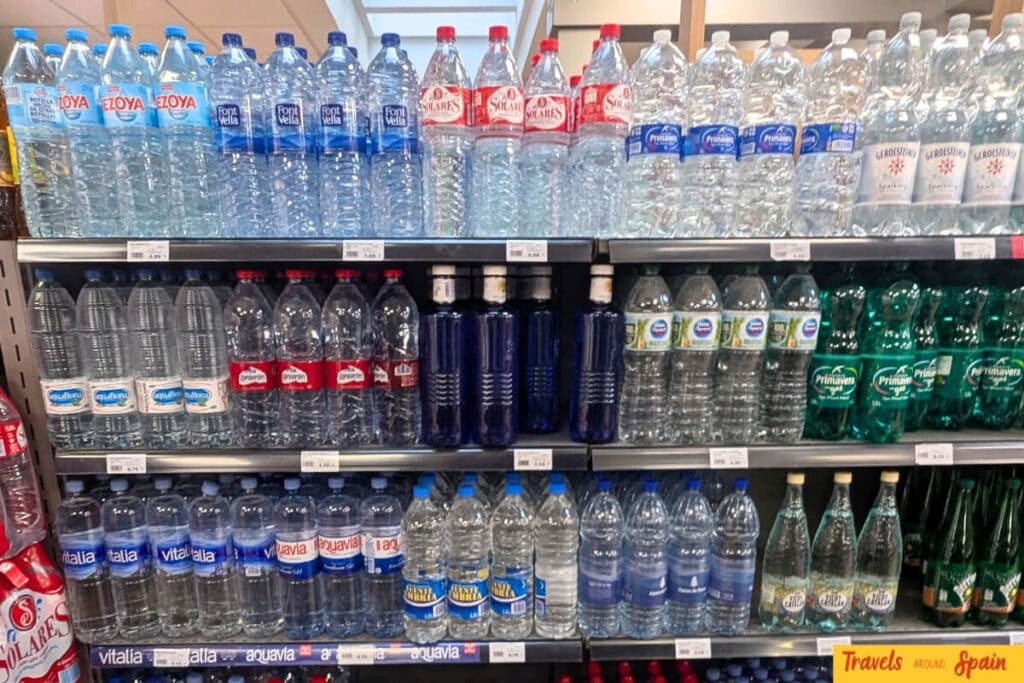
What This Means for Travellers
Can you drink the water in Gran Canaria hotels and restaurants? Absolutely. Despite local purchasing habits, the water is perfectly safe for all uses – drinking, cooking, and brushing teeth.
While you may choose bottled water for taste preferences, there are no health risks from drinking tap water in Gran Canaria. The same municipal supply serves hotels, restaurants, and local homes throughout the island.
Why Does Gran Canaria Water Taste Different?
So you’ve tried the tap water in Gran Canaria and you’re wondering why it tastes so different from home? The answer lies in Gran Canaria’s unique position as an island with limited freshwater resources.
The Desalination Process
Gran Canaria water quality is heavily influenced by desalination. 86% of Gran Canaria’s water comes from desalination plants, with over 45 facilities across the island processing seawater into drinking water in Gran Canaria.
But what exactly is desalination? It’s a reverse osmosis process where plants extract seawater and remove the salt content. While this makes Gran Canaria tap water safe to drink, it significantly affects the taste profile.
Following strict EU water safety regulations, chlorine is added during treatment to eliminate bacteria. While this ensures Gran Canaria tap water is safe, it contributes to the distinctive chlorinated aftertaste that many visitors notice.
Taste Variations Across Gran Canaria
Can you drink the water in Gran Canaria everywhere with the same taste? Not quite – the flavour varies significantly by location.
Las Palmas tap water has the strongest chlorine taste since most comes directly from desalination plants. In rural areas like the Agaete Valley, Gran Canaria water tastes better because some natural springs still supplement the supply.
Southern resort areas including Maspalomas and Puerto Rico often have a metallic taste – something I experienced firsthand during my stay. Mountain interior regions generally offer the best-tasting water, with natural springs improving the overall flavor profile.
What to Expect
Coming from northern England where I’m accustomed to soft, naturally-tasting water, drinking tap water in Gran Canaria was quite the adjustment. The water is noticeably harder with a distinct chemical taste and unpleasant aftertaste.
Ice-cold water does taste more palatable, but for many visitors like myself, the taste remains off-putting. We quickly headed to the supermarket for bottled water – a common reaction among tourists experiencing Gran Canaria water quality for the first time.
Practical Guide for Travellers
Hotel & Restaurant Water
Can you drink the water in Gran Canaria hotels safely? Absolutely. Hotels use the same municipal tap water that serves residents, with Las Palmas tap water meeting EU safety standards.
Ice cubes and cooked food use identical treated drinking water in Gran Canaria. Your hotel room tap water in Maspalomas, Puerto Rico, or Las Palmas comes from the same safe public supply.
Gran Canaria water quality standards apply uniformly – luxury resorts and budget accommodations receive identical safe drinking water.
For Sensitive Stomachs
Travellers with sensitive stomachs should take extra care when drinking tap water in Gran Canaria. The different mineral content from desalination may cause mild digestive issues initially.
If avoiding bottled water, start with small amounts of Gran Canaria tap water and gradually increase intake. This allows your stomach to adjust to the different minerals.
Stay hydrated regardless – Gran Canaria’s heat and high UV levels make adequate water intake essential for your health and holiday enjoyment.
Money-Saving Tips
Can you drink the water in Gran Canaria to save money? Definitely. Drinking Gran Canaria tap water saves families €20-40 per week compared to bottled water costs throughout your holiday. For other practical money matters during your stay, including avoiding ATM fees and getting the best exchange rates, see our complete guide to euros in Gran Canaria.
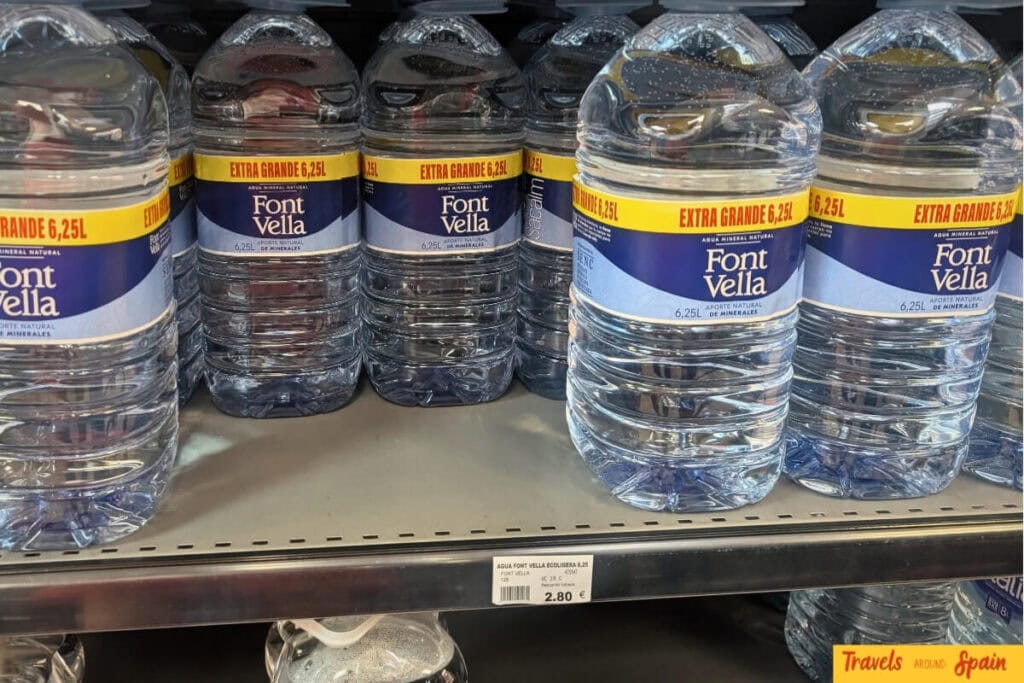
Refill reusable bottles at accommodation – Las Palmas tap water is perfectly safe and free. Public fountains across Gran Canaria tourist areas offer convenient refill points.
Consider environmental impact too – the island struggles with plastic waste management. Choosing safe Gran Canaria drinking water over bottles helps protect beautiful beaches and marine life.
What Locals Actually Do
Despite widespread bottled water purchases, many Gran Canaria locals actually drink tap water at home due to cost considerations. The preference for bottled water when dining out is purely taste-driven, not safety concerns.
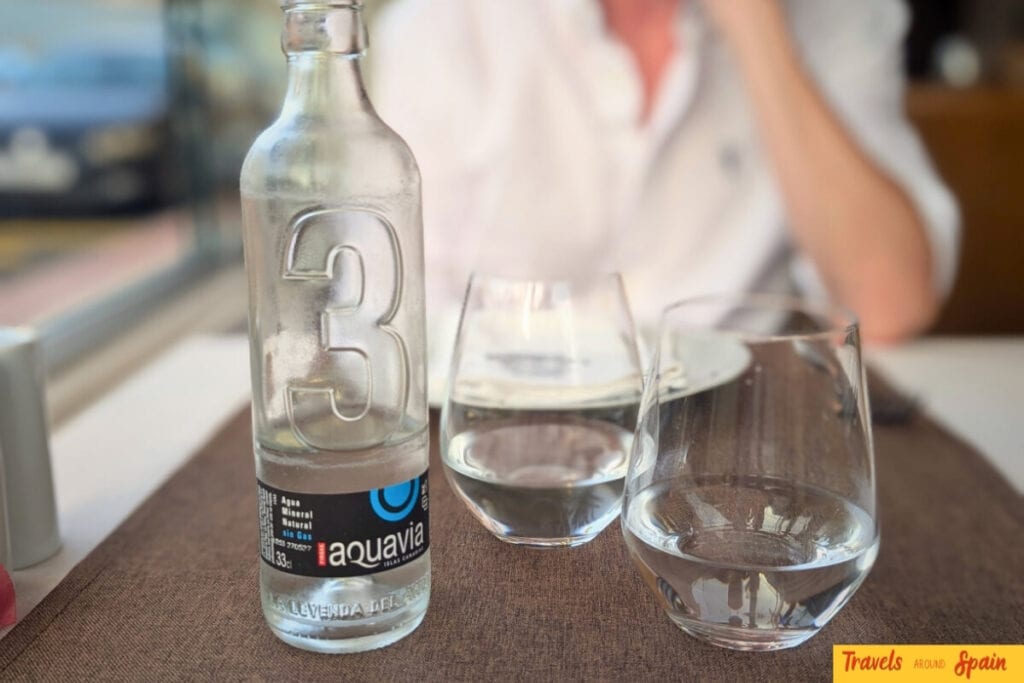
For daily activities like cooking, bathing, and brushing teeth, Las Palmas tap water is used universally across the island. Every local household relies on Gran Canaria tap water for these essential tasks without hesitation.
Can you drink the water in Gran Canaria safely like locals do? Of course. Local preferences are based entirely on taste, not water safety. Gran Canaria water quality ranks among Spain’s safest – the chlorinated taste is simply the main deterrent for regular consumption.
If you want to see how locals really live and observe their daily habits firsthand, our day trip guide to Las Palmas shows you how to explore the capital like a resident.
Best Alternatives if You Prefer Not to Drink Tap Water
So you’ve tried the Gran Canaria tap water and are really not convinced? What are your options?
Bottled Water Options
If you prefer not to drink tap water in Gran Canaria, bottled options are affordable and widely available. Large 5-8L containers cost €1-1.50 with pump dispensers, while 1.5L bottles offer convenience from any supermarket.
Best local brands include Aguas de Teror, Aguas de Firgas, and Aguas de Guayadeque. Glass bottle delivery services cost €5 for twelve 1L bottles. You’ll notice these water preferences when dining out – our guide to the best restaurants in Maspalomas covers excellent local spots where you can observe typical Canarian dining habits.
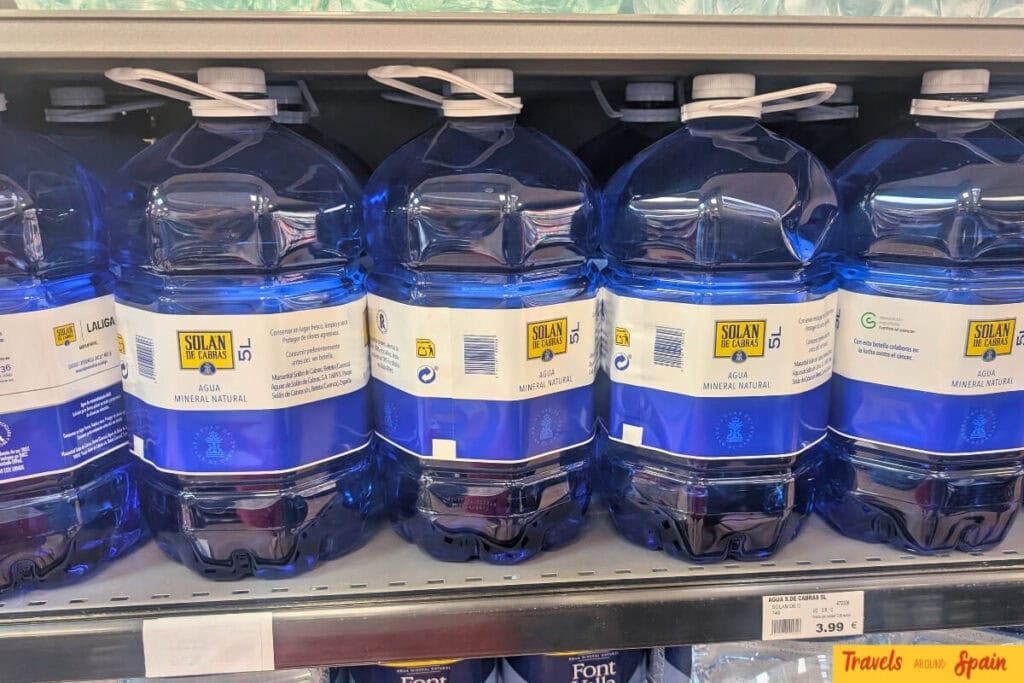
Water Filters
Water filters improve Gran Canaria tap water taste significantly for longer stays. Brita filters available at El Corte Inglés in Las Palmas remove chlorine while maintaining safety.
Can you drink the water in Gran Canaria with filters? Certainly – they’re cost-effective, costing half the price of bottled water containers, and tap attachments offer permanent solutions.
Practical Considerations
Bottled water is widely available throughout Gran Canaria if you prefer not to drink tap water. Water delivery services across Las Palmas and tourist areas accept cash, card, and Bizum payments for convenience.
Can you drink the water in Gran Canaria long-term? Filters become ideal for stays exceeding two weeks, offering better value than continuous bottled water purchases.
Environmental Impact & Responsible Tourism
The Plastic Problem
Drinking tap water in Gran Canaria reduces environmental impact significantly. Bottled water production releases 44-600g CO2 per 1.5L bottle, while consuming 17.4L of water per litre produced.
Can you drink the water in Gran Canaria sustainably? Yes – choosing Gran Canaria tap water over bottles helps address the island’s plastic waste management struggles.
Sustainable Choices
Refillable water bottles significantly reduce waste when visiting Gran Canaria. Can you drink the water in Gran Canaria sustainably? Absolutely – using Gran Canaria tap water supports local infrastructure while minimizing plastic footprint.
I personally use the Platypus 1-litre collapsible water bottle – it folds up to save luggage space but holds enough Gran Canaria drinking water for day trips. Consider glass bottle delivery services for longer stays while choosing sustainable options helps protect the island’s environment.
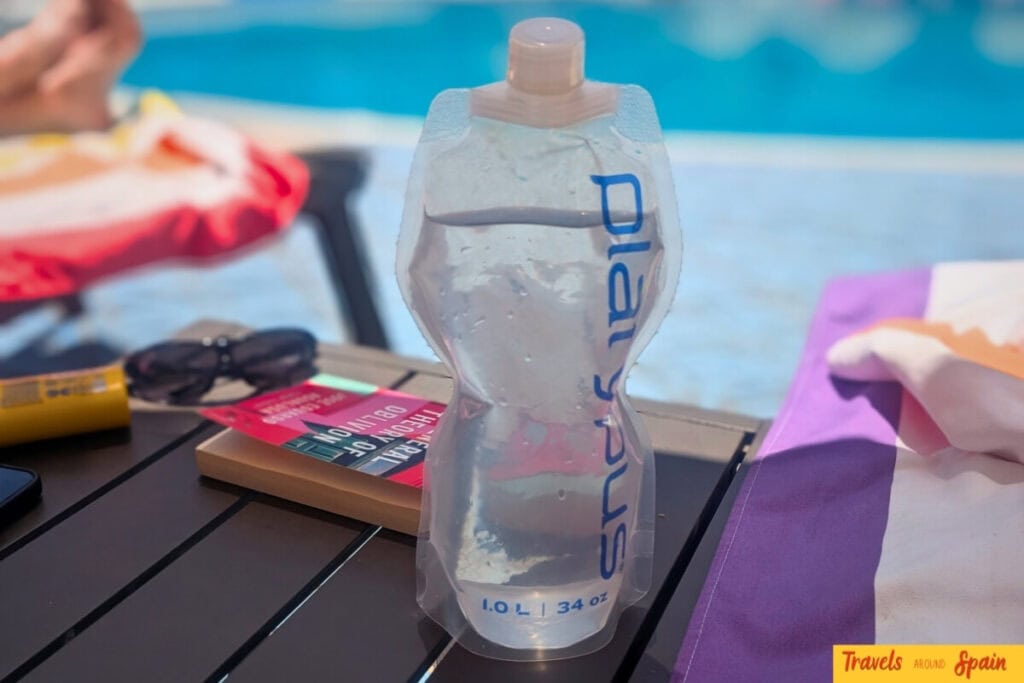
Local Perspective
Many bottled water brands sold in Gran Canaria actually contain tap water from other Spanish regions. Can you drink the water in Gran Canaria to support locals? Yes – choosing Gran Canaria tap water directly supports local infrastructure investment and benefits the community.
Small changes make significant impact on islands with limited resources. Drinking Las Palmas tap water helps sustain the very systems that serve residents year-round.
FAQs
Can I brush my teeth with tap water in Gran Canaria?
Yes, absolutely safe for brushing teeth, showering, and all personal hygiene.
Is Las Palmas tap water different from other areas?
Las Palmas water comes primarily from desalination and may have more chlorine taste, but rural areas often taste better.
Should I drink hotel tap water in Gran Canaria?
Hotel water is identical to municipal supply – completely safe to drink.
What does Gran Canaria tap water taste like?
Slightly chlorinated with mineral taste – varies by location. Ice cold water minimizes any unpleasant taste.
Is bottled water expensive in Gran Canaria?
Very affordable – large 8L containers cost €1-1.50, individual bottles around €0.50-1.
Can I get sick from Gran Canaria tap water?
No documented cases of illness from municipal tap water. Meets all EU safety standards.
Should I bring a water filter to Gran Canaria?
Not necessary for safety, but Brita filters available locally if you want to improve taste.
Is Gran Canaria water safe for babies?
Yes, safe for formula preparation and baby consumption – same standards as anywhere in EU.
How does Gran Canaria water compare to other Canary Islands?
Similar across all islands – Tenerife, Lanzarote, and Fuerteventura all use desalination with comparable safety standards.
Final Thoughts: Can You Drink the Water in Gran Canaria?
So, can you drink the water in Gran Canaria safely? Absolutely. While the taste from desalination might not win any awards, Gran Canaria tap water meets strict EU safety standards and is perfectly safe for all uses.
Whether you choose tap water, bottled water, or filters depends on your taste preferences and environmental priorities. Whatever you decide, stay hydrated and enjoy exploring this beautiful Canary Island – the water won’t be what ruins your holiday!
For more comprehensive trip planning advice, including the ideal seasons for visiting, check our complete guide to the best time to visit Gran Canaria.
About Me

My name is Liam and I’m the owner and author of ‘Travels Around Spain’. I have been obsessed with Spain ever since my first visit 35 years ago. I am on a mission to visit and discover every part of this beautiful country and share all my hints and tips with you all.
Read more about my journey by clicking here.



